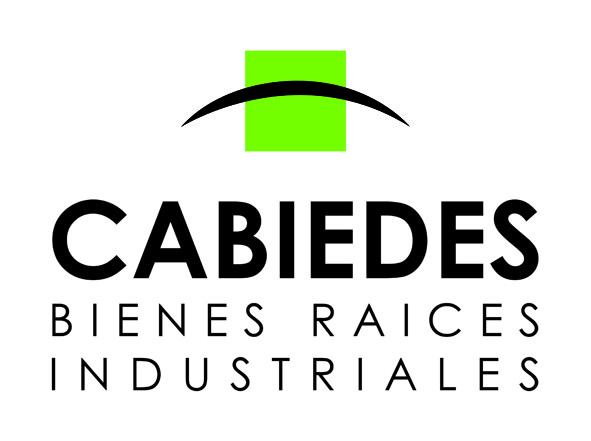artificial intelligence Preparing a chatbot training dataset: Converting famous writer’s txt files into input,target format
Chatbot Training Data Chatbot Dataset AI Services
A chatbot with little or no training is bound to deliver a poor conversational experience. Knowing how to train and actual training isn’t something that happens overnight. Building a data set is complex, requires a lot of business knowledge, time, and effort. If you are building a chatbot for your business, you obviously want a friendly chatbot.
Meta To Bring Celebrity-Inspired AI Chatbots To Its Platform – Black Enterprise
Meta To Bring Celebrity-Inspired AI Chatbots To Its Platform.
Posted: Wed, 04 Oct 2023 07:00:00 GMT [source]
As a result, organizations may need to invest in training their staff or hiring specialized experts in order to effectively use ChatGPT for training data generation. First, the system must be provided with a large amount of data to train on. This data should be relevant to the chatbot’s domain and should include a variety of input prompts and corresponding responses. This training data can be manually created by human experts, or it can be gathered from existing chatbot conversations.
INA: An Integrative Approach for Enhancing Negotiation Strategies with Reward-Based Dialogue System
For example, if a user asks a chatbot about the price of a product, the chatbot can use data from a dataset to provide the correct price. Keyword-based chatbots are easier to create, but the lack of contextualization may make them appear stilted and unrealistic. Contextualized chatbots are more complex, but they can be trained to respond naturally to various inputs by using machine learning algorithms.
We are constantly updating this page, adding more datasets to help you find the best training data you need for your projects. TyDi QA is a set of question response data covering 11 typologically diverse languages with 204K question-answer pairs. It contains linguistic phenomena that would not be found in English-only corpora. QASC is a question-and-answer data set that focuses on sentence composition. It consists of 9,980 8-channel multiple-choice questions on elementary school science (8,134 train, 926 dev, 920 test), and is accompanied by a corpus of 17M sentences. Finally, it’s worth noting that perplexity is only one choice for evaluating language models.
Uncompromised Data Security
In this post, I’m sharing with you some design principles, free available small talk data sets, and things to consider when implementing small talk with a chatbot. FAQ and knowledge-based data is the information that is inherently at your disposal, which means leveraging the content that already exists on your website. This kind of data helps you provide spot-on answers to your most frequently asked questions, like opening hours, shipping costs or return policies. Product data feeds, in which a brand or store’s products are listed, are the backbone of any great chatbot.
Natural Questions (NQ), a new large-scale corpus for training and evaluating open-ended question answering systems, and the first to replicate the end-to-end process in which people find answers to questions. NQ is a large corpus, consisting of 300,000 questions of natural origin, as well as human-annotated answers from Wikipedia pages, for use in training in quality assurance systems. In addition, we have included 16,000 examples where the answers (to the same questions) are provided by 5 different annotators, useful for evaluating the performance of the QA systems learned.
In general, it can take anywhere from a few hours to a few weeks to train a chatbot. However, more complex chatbots with a wider range of tasks may take longer to train. Companies in the technology and education sectors are most likely to take advantage of OpenAI’s solutions. At the same time, business services, manufacturing, and finance are also high on the list of industries utilizing artificial intelligence in their business processes. OpenAI has reported that the model’s performance improves significantly when it is fine-tuned on specific domains or tasks, demonstrating flexibility and adaptability. It was trained on a massive corpus of text data, around 570GB of datasets, including web pages, books, and other sources.
On the other hand, if a chatbot is trained on a diverse and varied dataset, it can learn to handle a wider range of inputs and provide more accurate and relevant responses. This can improve the overall performance of the chatbot, making it more useful and effective for its intended task. After uploading data to a Library, the raw text is split into several chunks.
Building a chatbot horizontally means building the bot to understand every request; in other words, a dataset capable of understanding all questions entered by users. If you have started reading about chatbots and chatbot training data, you have probably already come across utterances, intents, and entities. In order to quickly resolve user requests without human intervention, chatbots need to take in a ton of real-world conversational training data samples. Without this data, you will not be able to develop your chatbot effectively.
The chatbot can understand what users say, anticipate their needs, and respond accurately. It interacts conversationally, so users can feel like they are talking to a real person. The use of ChatGPT to generate training data for chatbots presents both challenges and benefits for organizations.
The next step will be to create a chat function that allows the user to interact with our chatbot. We’ll likely want to include an initial message alongside instructions to exit the chat when they are done with the chatbot. Once our model is built, we’re ready to pass it our training data by calling ‘the.fit()’ function.
With the right data, you can train chatbots like SnatchBot through simple learning tools or use their pre-trained models for specific use cases. This dataset contains 3.3K expert-level pairwise human preferences for model responses generated by 6 models in response to 80 MT-bench questions. The 6 models are GPT-4, GPT-3.5, Claud-v1, Vicuna-13B, Alpaca-13B, and LLaMA-13B. The annotators are mostly graduate students with expertise in the topic areas of each of the questions. Break is a set of data for understanding issues, aimed at training models to reason about complex issues.
At all points in the annotation process, our team ensures that no data breaches occur. Although phone, email and messaging are vastly different mediums for interacting with a customer, they all provide invaluable data and direct feedback on how a company is doing in the eye of the most prized beholder. It doesn’t matter if you are a startup or a long-established company.
The Chatbot Arena and MT-Bench evaluation code are available on GitHub. The Arena conversation dataset and MT-Bench response dataset are available on Huggingface, as is the current LLM Leaderboard. The rise of LLMs has led to a need for new benchmarks to measure their abilities, as the models have achieved superhuman performance on traditional ones like GLUE. Here is my favorite free sources for small talk and chit-chat datasets and knowledge bases. All of these are free and you’ll just need to extract them to use it as your own. Chatbots already have a preconception around being brittle bots that can’t talk about anything that they have not been trained on without personality or a long-term memory.
If you need more datasets, you can upgrade your plan or contact customer service for more information. Since there is no balance problem in your dataset, our machine learning strategy is unable to capture the globality of the semantic complexity of this intent. With over a decade of outsourcing expertise, TaskUs is the preferred partner for human capital and process expertise for chatbot training data. The datasets you use to train your chatbot will depend on the type of chatbot you intend to create. The two main ones are context-based chatbots and keyword-based chatbots.
- The random Twitter test set is a random subset of 200 prompts from the ParlAi Twitter derived test set.
- Common use cases include improving customer support metrics, creating delightful customer experiences, and preserving brand identity and loyalty.
- You then draw a map of the conversation flow, write sample conversations, and decide what answers your chatbot should give.
- Preparing the training data for chatbot is not easy, as you need huge amount of conversation data sets containing the relevant conversations between customers and human based customer support service.
This process can be time-consuming and computationally expensive, but it is essential to ensure that the chatbot is able to generate accurate and relevant responses. Another example of the use of ChatGPT for training data generation is in the healthcare industry. A hospital used ChatGPT to generate a dataset of patient-doctor conversations, which they then used to train their chatbot to assist with scheduling appointments and providing basic medical information to patients.
These operations require a much more complete understanding of paragraph content than was required for previous data sets. Even worse, since the One Billion Word Benchmark breaks full articles into individual sentences, curators have a hard time detecting instances of decontextualized hate speech. The problem is that news publications cycle through viral buzzwords quickly – just think about how often the Harlem Shake was mentioned 2013 compared to now. Despite its large size and high accuracy, ChatGPT still makes mistakes and can generate biased or inaccurate responses, particularly when the model has not been fine-tuned on specific domains or tasks.
Read more about https://www.metadialog.com/ here.


Únete a la discusión